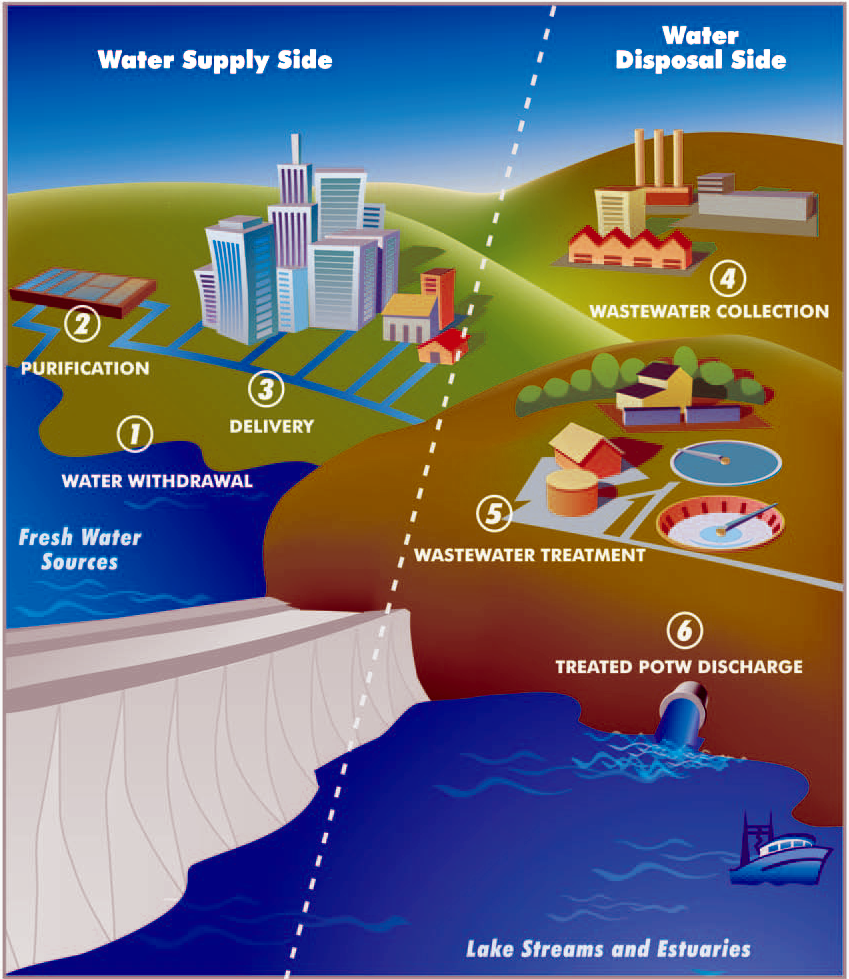The New Mexico Legislative Finance Committee had about a dozen experts study the state’s looming water and wastewater infrastructure problem. The report was published August 22, “Policy Spotlight: State-Funded Water Projects.”
The study includes three case studies that serve to exemplify bad practices leading to crisis-level failures of water and wastewater infrastructure and the resultant requests by local entities for massive amounts of state funding. Truth or Consequences, Santa Fe and Camino Real Regional Utility Authority were the chosen cases, which requested a combined $123 million during the last legislative session that ended Jan. 15, 2024. T or C received $25.4 million of the over $40 million requested which will be used to replace 18 percent of its worst waterlines.
T or C had 376 leaks within a nine-month period, with the city losing about 25 percent of its water due to leaks, the study said.
When I read this I thought, ‘Wow, that’s way down. The city’s emergency repairs and patches must be helping.” During the last legislative session the city, in its applications and presentations to state agencies and legislators, stated the city was losing 43 percent of its water. The study, if correct, meant an 18 percent reduction in leaks in the last year.
The study got the 25-percent figure from the city, which was used what the city gave them. The city compared “metered water to treated water.”
I don’t understand why “treated water” was used in the comparison. Water produced from the city’s wells should be the beginning figure. I recently asked the city for documents showing how many gallons were pumped from city wells and for documents showing how many gallons were metered. Metered figures are shown on water –billing records. I asked for August and September 2024 documents.
During August city wells produced 54,573,700 gallons and 32,069,000 gallons were metered, indicating that 22,504,700 gallons or 41 percent of the water produced was lost.
During September city wells produced 49,727,300 gallons and 15,023,000 gallons were metered, indicating that 34,704,300 gallons or 69.7 percent of the water produced was lost.
I would love to be corrected if my figures for water loss are wrong. The numbers are terrifying.
The study uses T or C as an example of a city deferring maintenance and repairs, with T or C’s systems dating from the 1960s. It attributes part of the neglect to transferring water and wastewater funds into the general fund—paying for general governmental activities with those funds instead of using them for maintenance and repairs.
“As part of proper operations, local water systems should proactively repair and replace infrastructure assets over time rather than wait for critical breakdowns to be fixed with state funding. However, that has not always happened, as illustrated most recently by the city of Truth or Consequences,” the study states.
Utah, unlike New Mexico, the study points out, requires that if a municipality intends to transfer utility funds into the general fund that it hold “a stand-alone public hearing” on the transfer, and that the transfer be formally approved by the city’s elected governing board.
West Virginia, the study said, bans transfers from utility funds to pay for general government operations.
T or C, the study said, transferred $1.3 million from its water and wastewater utilities from 2014 to 2023.
The study recommends that the New Mexico legislature pass a law following Utah’s practice of requiring stand-alone public hearings followed by elected city commissioners’ votes to transfer utility funds into the general fund.
It also recommends that no water and wastewater projects be funded by capital outlay, which is the largest source for funding such projects.
Other states have centralized how water and sewer projects are vetted. They make sure projects are vetted by technical experts. New Mexico’s capital outlay process is decentralized. Legislators across the state and the governor don’t have to vet the projects and there are no application requirements or qualifications.
Water and wastewater funding should only come through the Water Trust Board, Colonias Infrastructure Fund, Tribal Infrastructure Fund and the two state revolving funds, the study said, because vetting is done and local governmental entities must be current with their yearly financial audits to qualify.
The study recommends that New Mexico, like other western states, make water a priority, form a central technical board that has an overview of the state’s water and wastewater infrastructure needs. New Mexico, the study said, needs to complete regional water district plans and prioritize projects based on the needs made clear from those regional studies and plans. The central technical body should submit a list of eligible projects to be funded to the legislature, taking away legislative and governor discretion, the study said.
New Mexico’s only prioritization happens at the local level, the study said. Local governments prioritize their projects on their yearly-updated five-year Infrastructure Capital Improvements Plan (ICIP). Many of these local entities don’t have the technical know-how to prioritize projects, the study points out. Many local entities struggle with day-to-day operations, don’t have asset management plans and in some cases haven’t mapped their pipe locations. Planning is beyond them, the study points out.
With this non-technical method of prioritizing water and wastewater projects, state funding is not spent efficiently, the study notes.
The ICIPs turned in mid-July 2024 are the basis of much of the study’s figures, conclusions and recommendations. Local governments asked the state for $5.7 billion for water and sewer infrastructure projects over the next five years.


The discrepancies you noted seem to reflect the confusion and professional inadequacies of city employees and elected officials we rely on to make these decisions. Like you, I hope I am wrong about this.
this is concerning, but not surprising~ i am dismayed & disappointed in how little those with power seem to care about this community…
Whether the amount of water lost to leakage is 25% or 70%, it would seem that citizens are having to pay extra for the cost of pumping all the additional water that goes to waste. And this is not just an extra cost for a month or two – this has been going on for years and will continue. It would seem that the pumps will wear out sooner too.
I hope the the City has extra water rights laying around to make up for the lost water — it would be interesting to know what the Office of the State Engineer thinks about this situation.
Hi Dan. Yes, all this extra pumping is costing more in electricity, labor and private contracting to clean out the wells and fix the pumps or slippage in the well shafts. We also pay to treat the water with chlorine that is lost.
I think the city has about 2,400 or 2,500 acre feet a year of water right use. Many years ago, when last I checked, the city was using about 1,400 afy, so I think they have enough right, but what about the water?
I was gone almost 7 years and when I came back the first thing I noticed was how much more particulate is left behind by the water…my faucets caking up with white chalky stuff, my pans have a white residue after boiling water. The city has fixed several wells (well eight or seven I think was fixed twice at about $100,000 a shot) in the last five years. Cloudy water is cited. I think the wells are pumping up from drought-deprived water reserves which contain particulate that is hard on the wells, the pumps, the pipes.
The OSE, in my experience, is so badly funded, so understaffed, that it can only take a 30,000-foot view. The study cited in the article says the OSE has suggested voluntary regional water planning, which is underway. The lateness of such planning, in the desert, and the voluntary nature of this planning, in a drought, is the bizarre “manana” attitude of fatalists….nothing can be done, we all have to die, don’t worry, be happy. I often feel like a Casandra or chicken little.